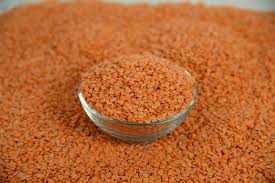After rice and atta, govt to offer Bharat masur dal, but at the market prices
By Puja Das
After Bharat atta and rice, the Union government is planning to launch Bharat masur (lentil) dal – but, at around ₹89 per kg, without a discount – a senior official told Mint.
Normally the Bharat brand comes with hefty discounts. The lentil pricing comes despite inflation being in control and with huge quantities of masoor lying in government stocks. The all-India average retail price of masur dal was ₹93.5 a kg on Wednesday.
“In the first phase, NAFED (National Agricultural Cooperative Marketing Federation of India Ltd) and NCCF (National Cooperative Consumers’ Federation of India Limited) will process and pack 25,000 tonnes of the pulse and it will be distributed through Kendriya Bhandar across the country,” the official quoted above said.
“The sales are expected to start from the first week of March once the modalities are ready.”
“Although masur dal prices are not high, we have decided to sell it under the ‘Bharat’ brand to make the basket bigger. Hence, we will not offer masur dal at a discounted rate. We have decided to keep the price almost the same as the market peice at around ₹89 a kg,” the official said.
“We have around 720,000 tonnes of masur in our stock, mostly in the PSF (price stabilisation fund).”
In the last calendar year, India imported about 3.1 million tonnes of pulses, half of it masur, mostly from Canada and Australia.
Bharat masur dal will be available in 1-kg packs.
As part of its retail intervention to tame inflation, the government is selling Bharat rice at ₹29 a kg, Bharat atta at ₹27.50 per kg and Bharat dal (chana) at ₹60 per kg through NAFED, NCCF and Kendriya Bhandar.
The number of retail points, including mobile vans and e-commerce sites, have been increased to nearly 18,000 from the existing 8,000-9,000, union consumer affairs, food and public distribution minister Piyush Goyal said earlier.
Queries sent to the spokesperson and the secretaries of consumer affairs, food and public distribution ministry remained unanswered at press time.
Prime Minister Narendra Modi, in his Independence Day speech last year, pledged to curb inflation in remarks made months ahead of general elections due in April-May this year. As a result, the government has taken a series of preventative measures, including retail intervention.
In January, food inflation, comprising nearly half the overall consumer price basket, was 8.30%, down from 9.53% in December 2023.
On Wednesday, masur dal prices at the all-India retail level remained at par with the last month but were 0.8% lower than a year ago, according to the consumer affairs ministry data.
“In a way, all these measures would be covered under so-called food subsidy to bring down consumer prices and tame inflation. Despite this, the existing CPI inflation data shows a 13% increase in rice. The government is overestimating food inflation because it is not picking up the weight of free food. Secondly, it shows a clear bias in favour of consumers but often it costs farmers because when prices went up, growers of wheat, rice and onion could not take full advantage of it. So, in a way you are transferring resources from farmers to consumers, which is not a great policy,” said Ashok Gulati, distinguished professor at the Indian Council for Research on International Economic Relations.
“The real policy should be protecting the most vulnerable and the remaining ones should be aligned to the market. If the government has to enter, then it should be only marginal intervention. If you are saying poverty has come down to 5%, why are you giving free foodgrains to 60% of the population? That’s where the conflict is. Farmers want higher prices, and that’s why there is a demand for raising the MSP (minimum support price) while consumers want everything at a very low price or preferably everything free. Balancing the interest of producers and consumers is a job of the political masters.”
“My feeling is it is election time, and consumers, especially urban consumers always get priority because they are larger in number,” Gulati added.
This article has been republished from The Livemint.

